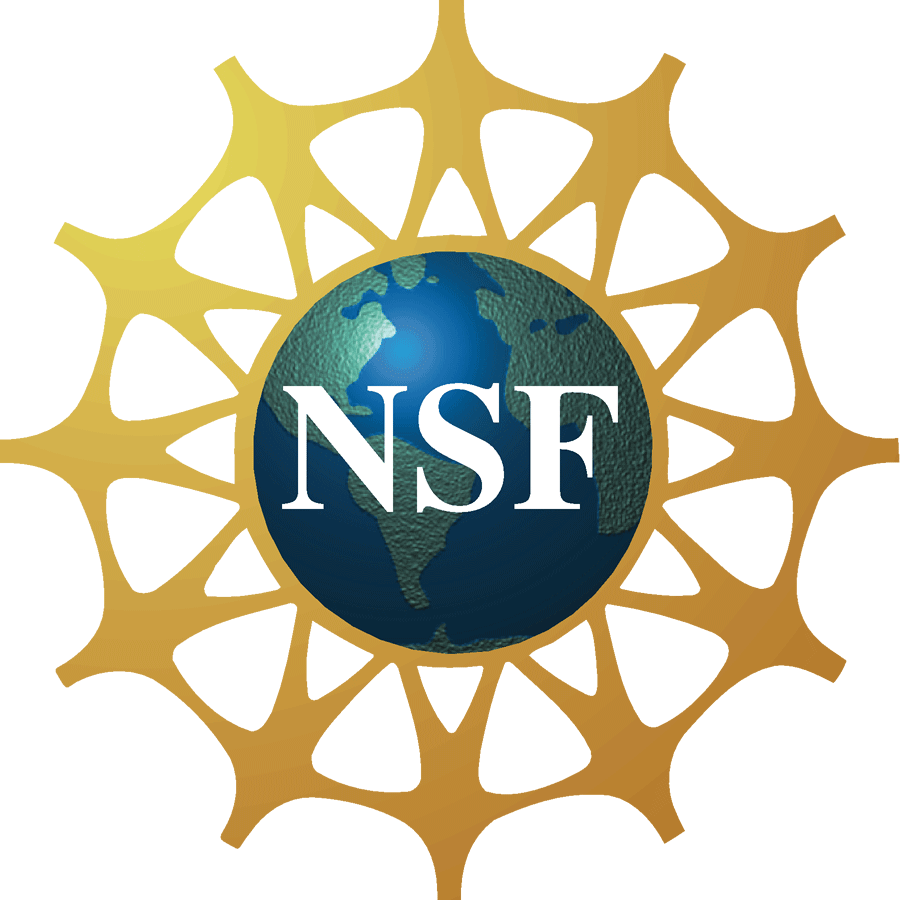Seminars and Panels
|
Insane Asylums and Genetics: How Human Heredity Became a Data Science
Professor Theodore M. Porter
|
Feb 17 2017
|
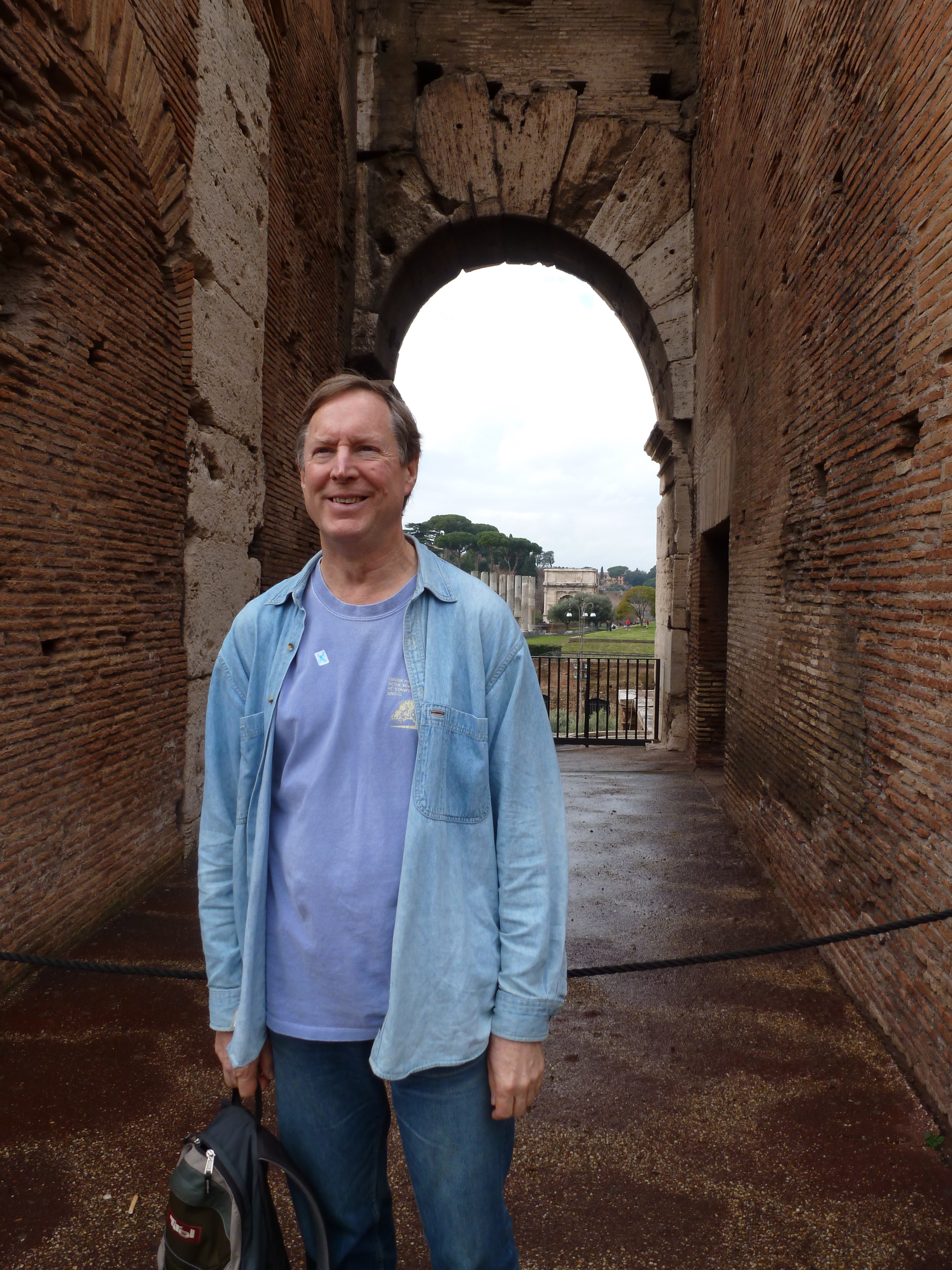
When did the data of human heredity become an obsession? Long before genomics, even before the beginning of genetics, if we identify that science with the first recognition of Mendel's work in 1900. The great obsession of human genetics ca. 1910 was the inheritance of mental illness and mental disability. These concerns go back to the first efforts to provide reliable hospital care for the insane in the early nineteenth century. The promise to cure most of the insane did not work out, and soon asylum doctors began shifting their hopes to elimination of the causes of insanity, on which they kept going back to about 1810. Right from the beginning, heredity was the cause they found most interesting and most believable. That is, their data suggested, the solution of discourage marriages of the insane. What began as routine medical-administrative recording gradually turned to serious inquiry. Asylum doctors helped carry out censuses of the insane, developed tools to investigate the families of their patients, calculated probabilities of mental illness in offspring based on their ancestry, compiled pedigrees of insanity, and adopted filing technologies based on data cards. The new statistics and the new genetics of the early twentieth century depended on data and even research methods from these institutions. This history requires us to think of human genetics differently, not as a basic science that could be applied to medical and psychiatric issues, but as a response to pressing worries that succeeded over time in generalizing its methods and understandings.
About Professor Theodore Porter
Theodore M. Porter is professor of history at UCLA. His books include The Rise of Statistical Thinking, 1820-1900 (1986), Trust in Numbers: The Pursuit of Objectivity in Science and Public Life (1995), and Karl Pearson: The Scientific Life in a Statistical Age (2004). His next book, tentatively titled The Unknown History of Human Heredity, is about to go into press at Princeton University Press. He began his career with a postdoc at Caltech and taught for six years at the University of Virginia. His visiting appointments include the Center for Interdisciplinary at the University of Bielefeld, Germany, the Center for Advanced Study in the Behavioral Sciences at Stanford, and the Wissenschaftskolleg zu Berlin / Berlin Institute for Advanced Study.
Click here to view the presentation. |
Click here to view the webcast. |
||
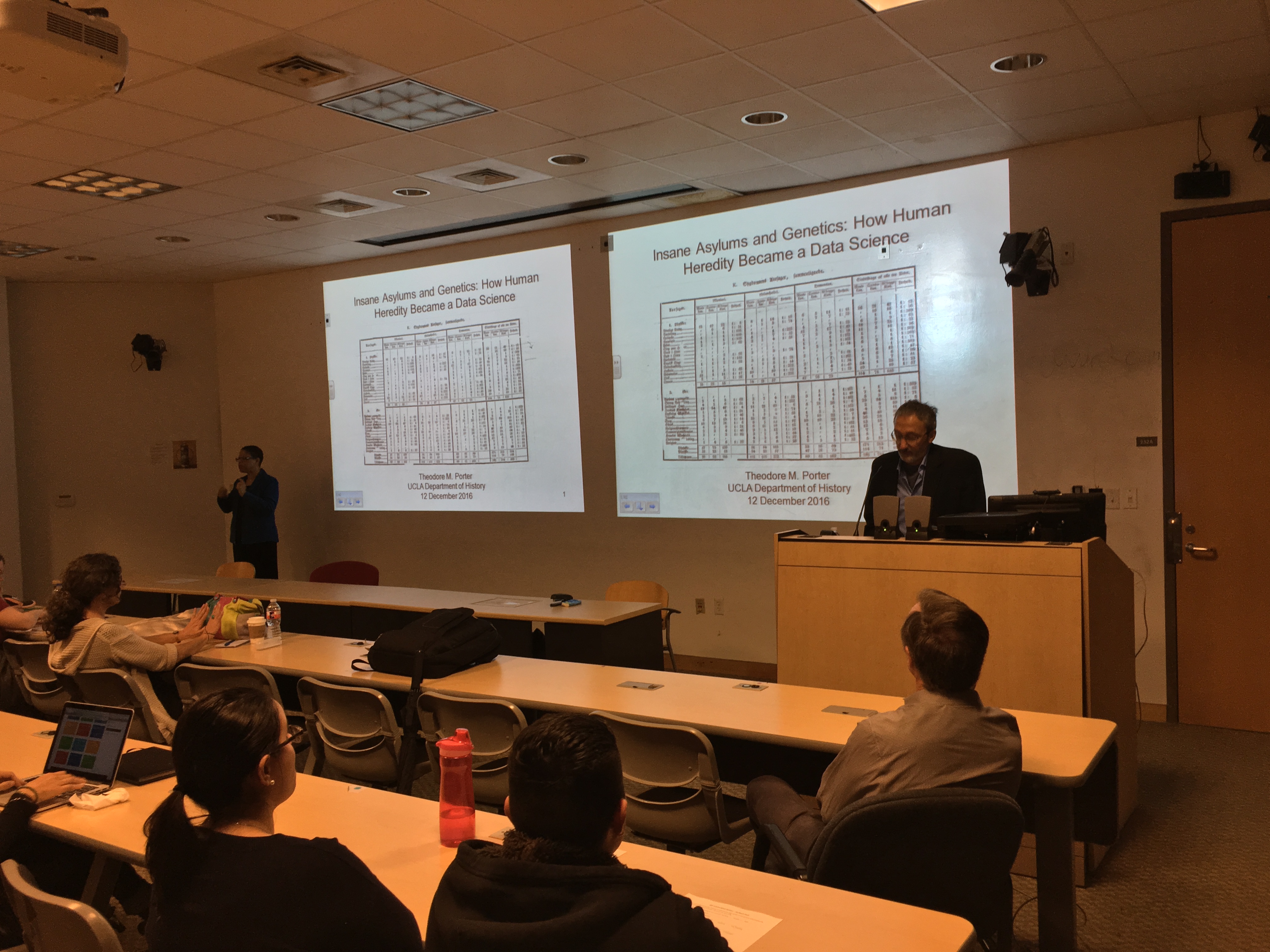
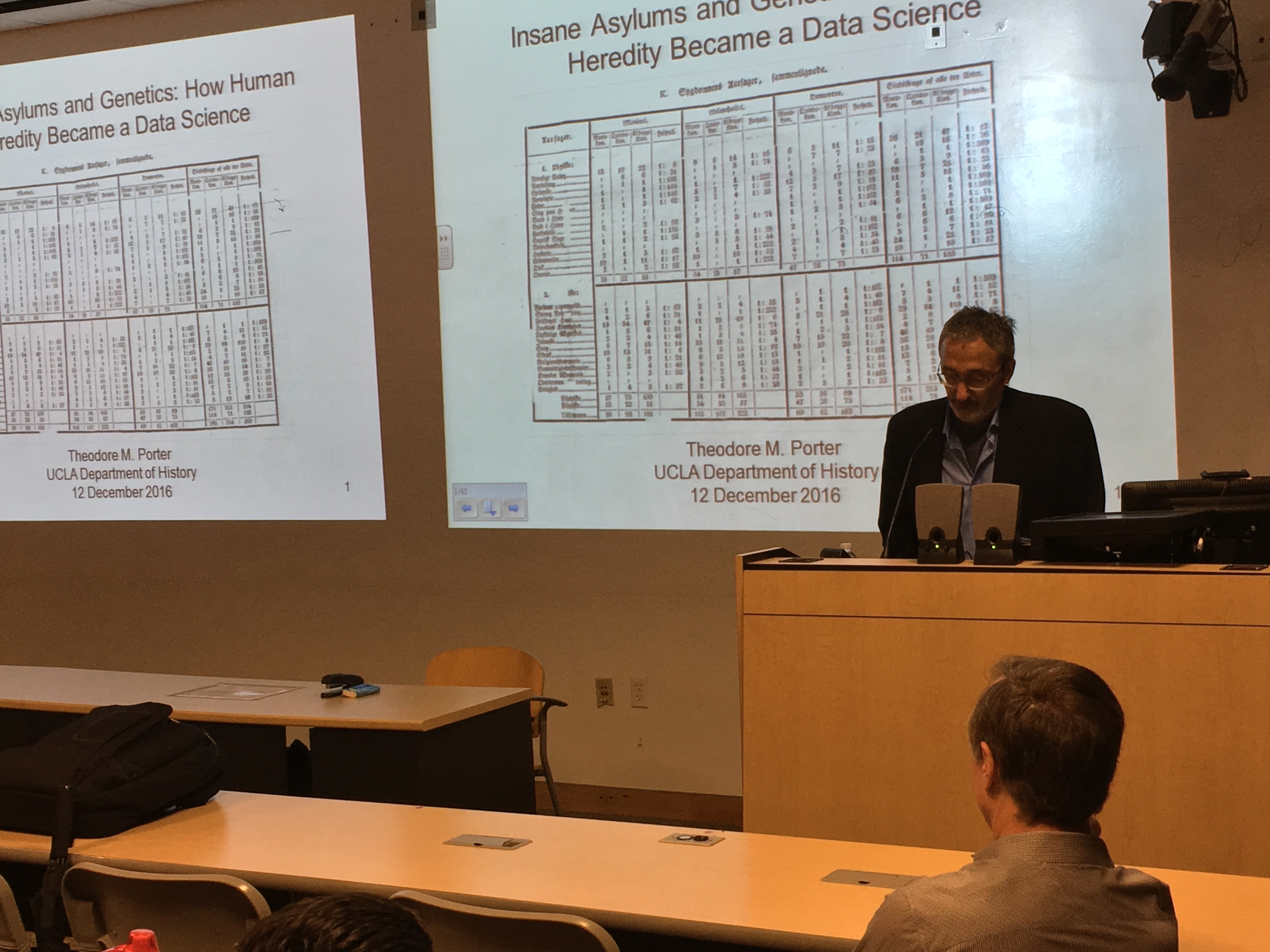
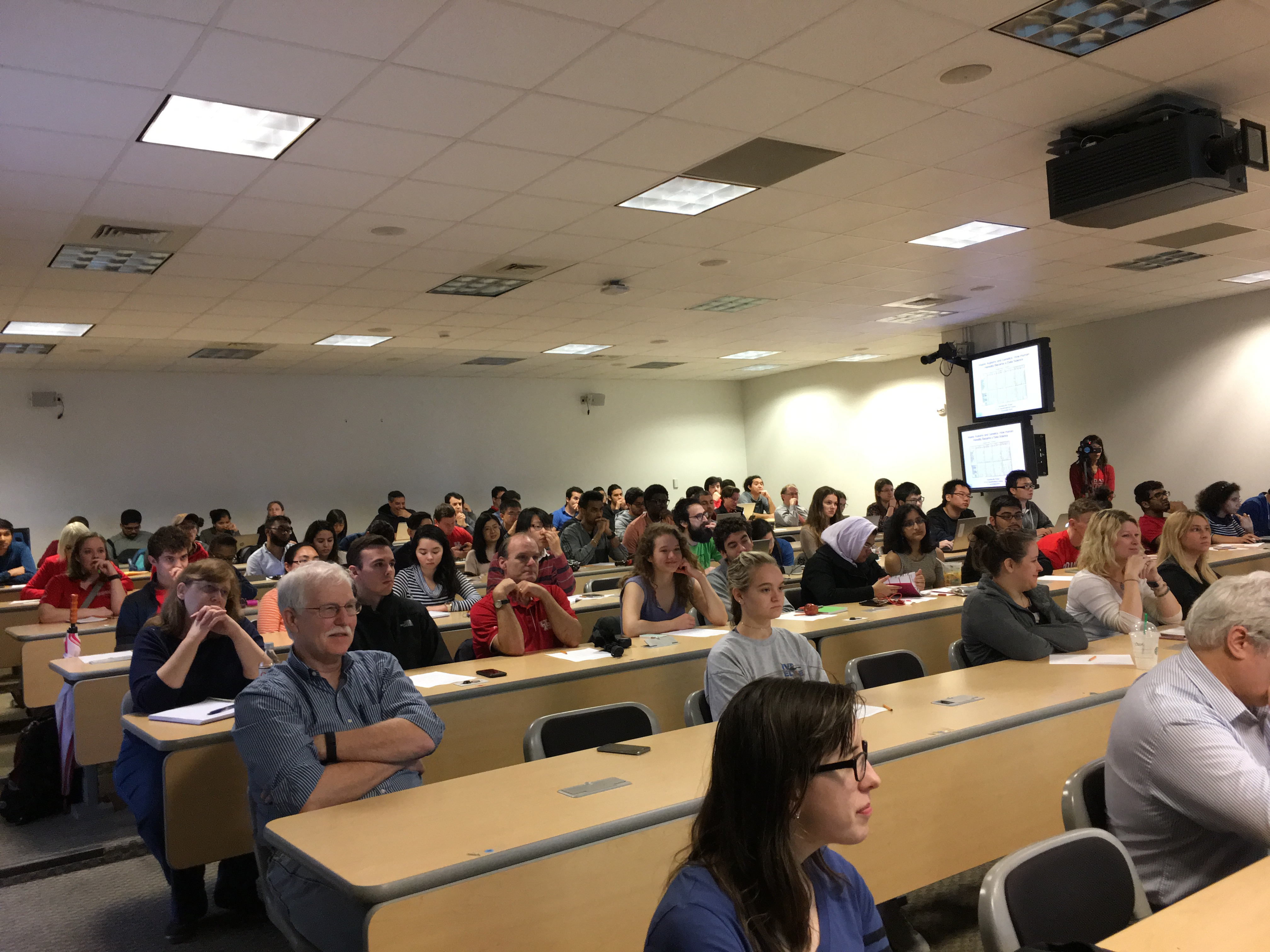
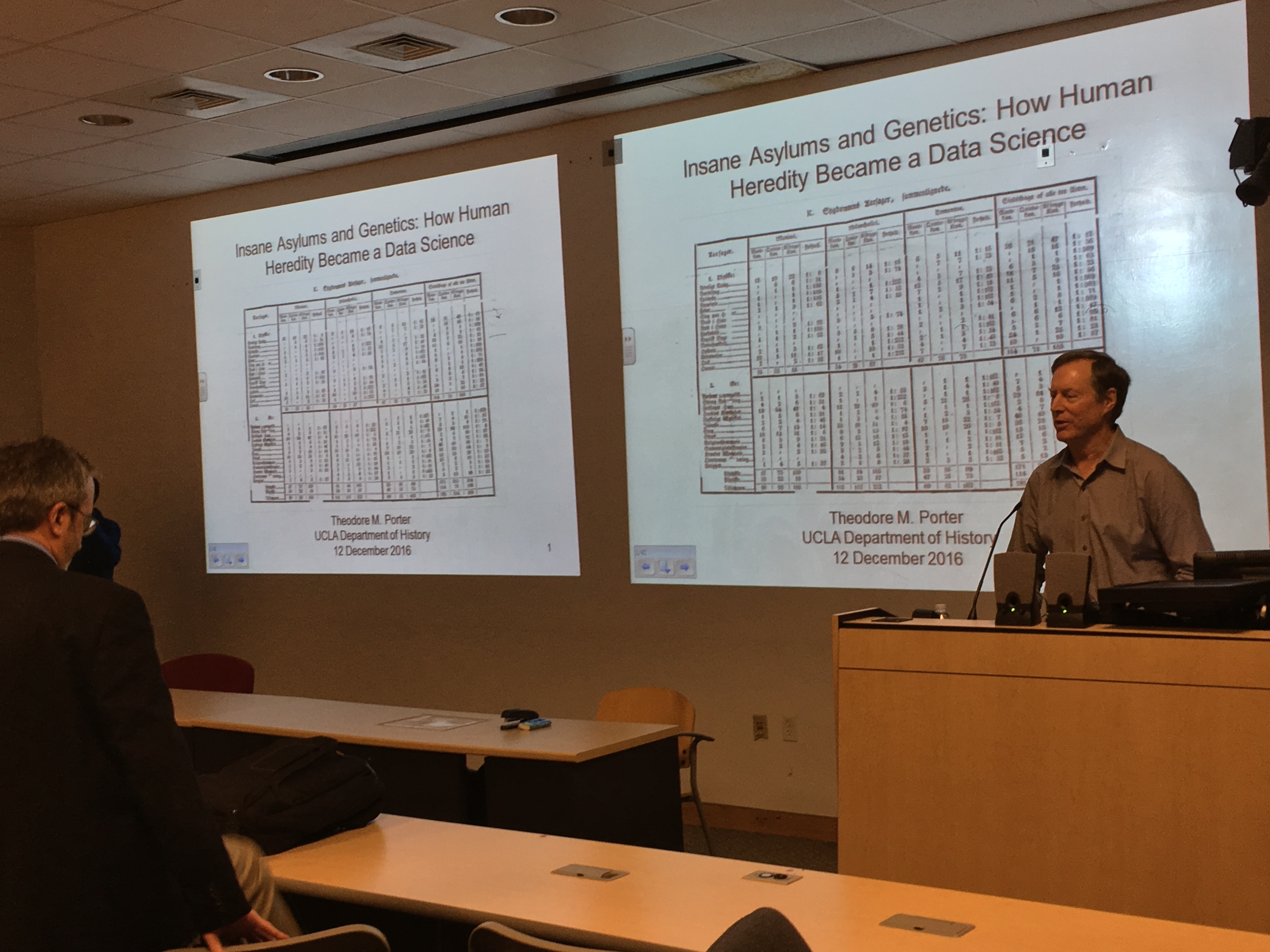
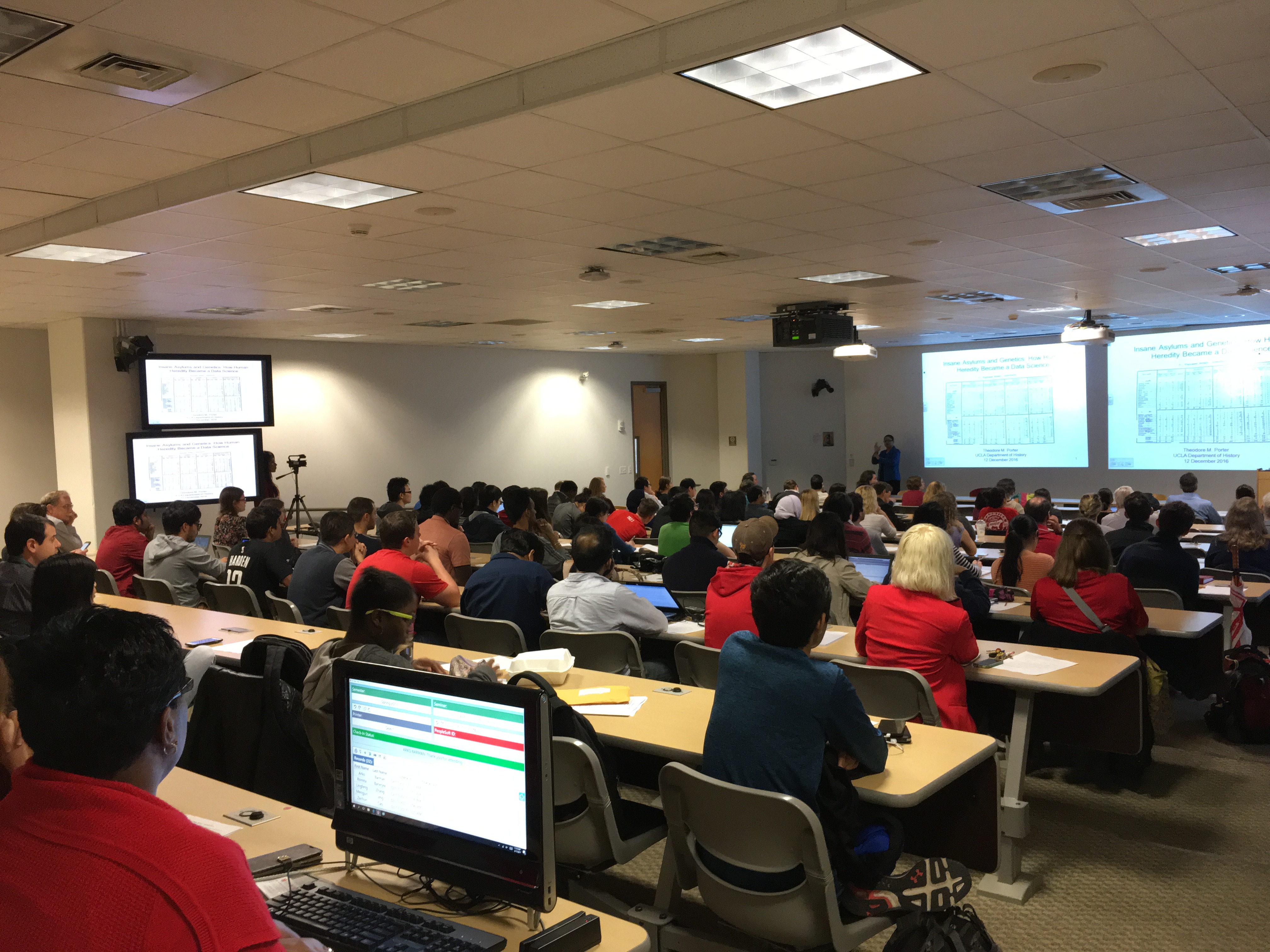
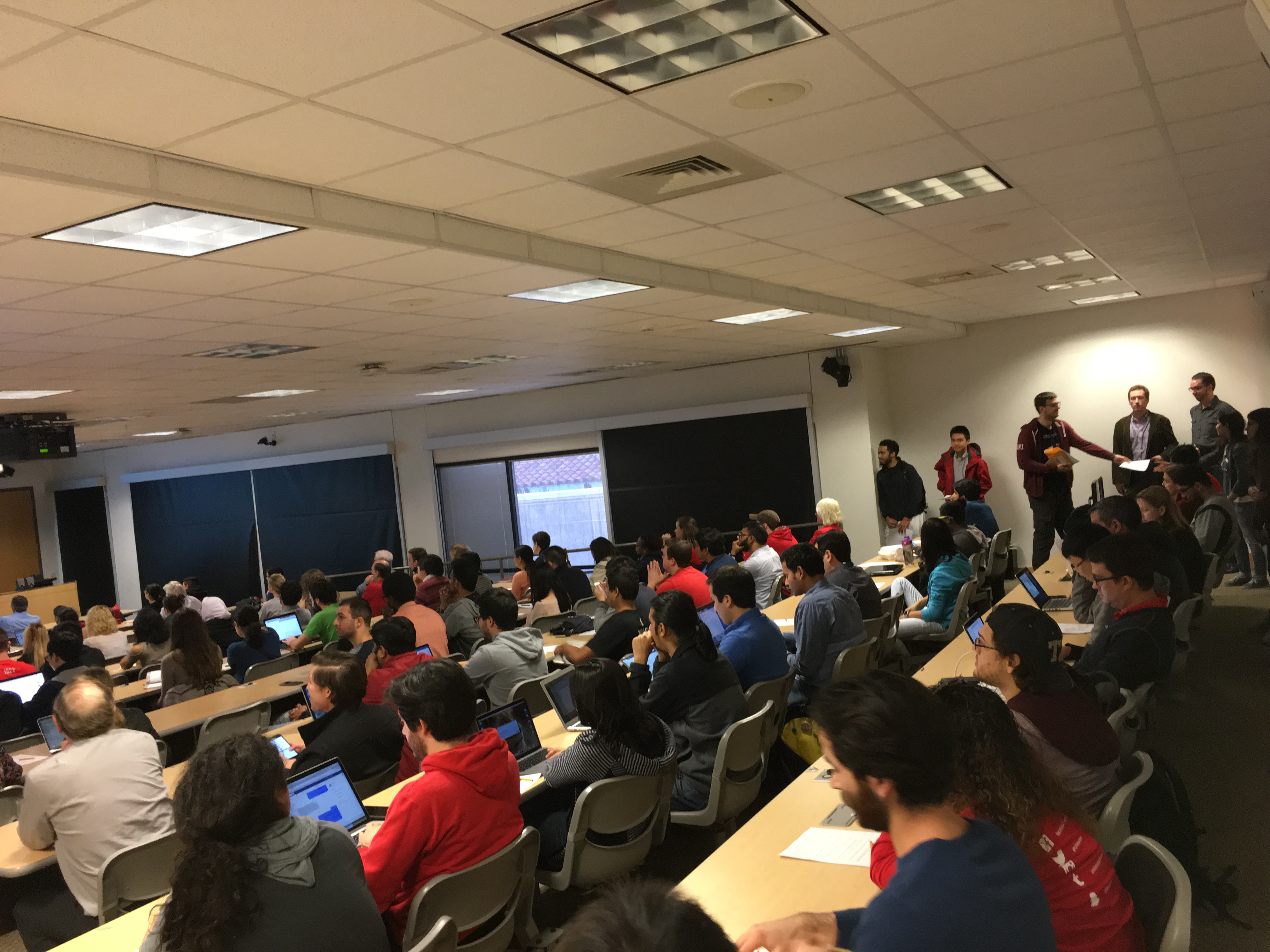
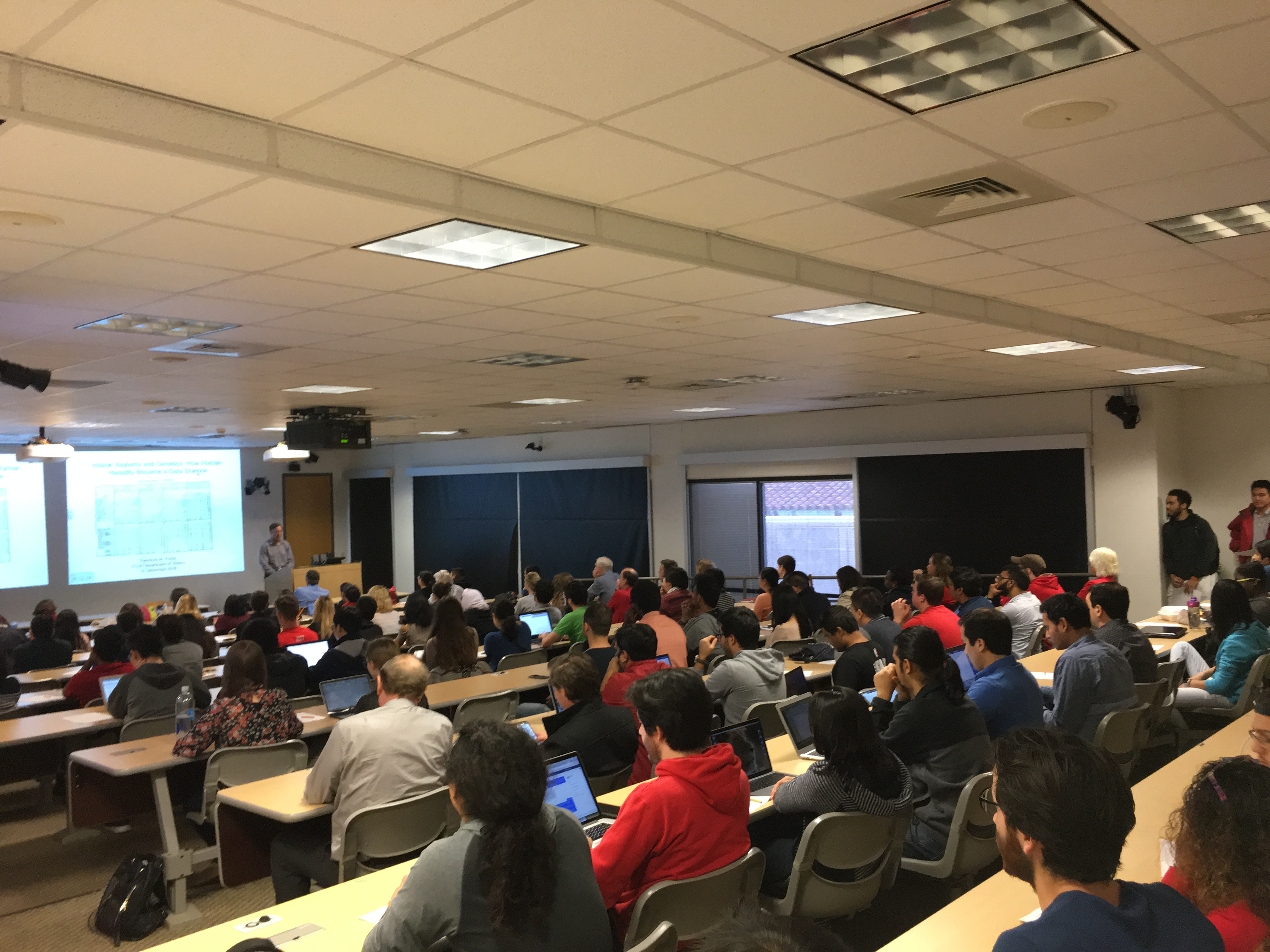
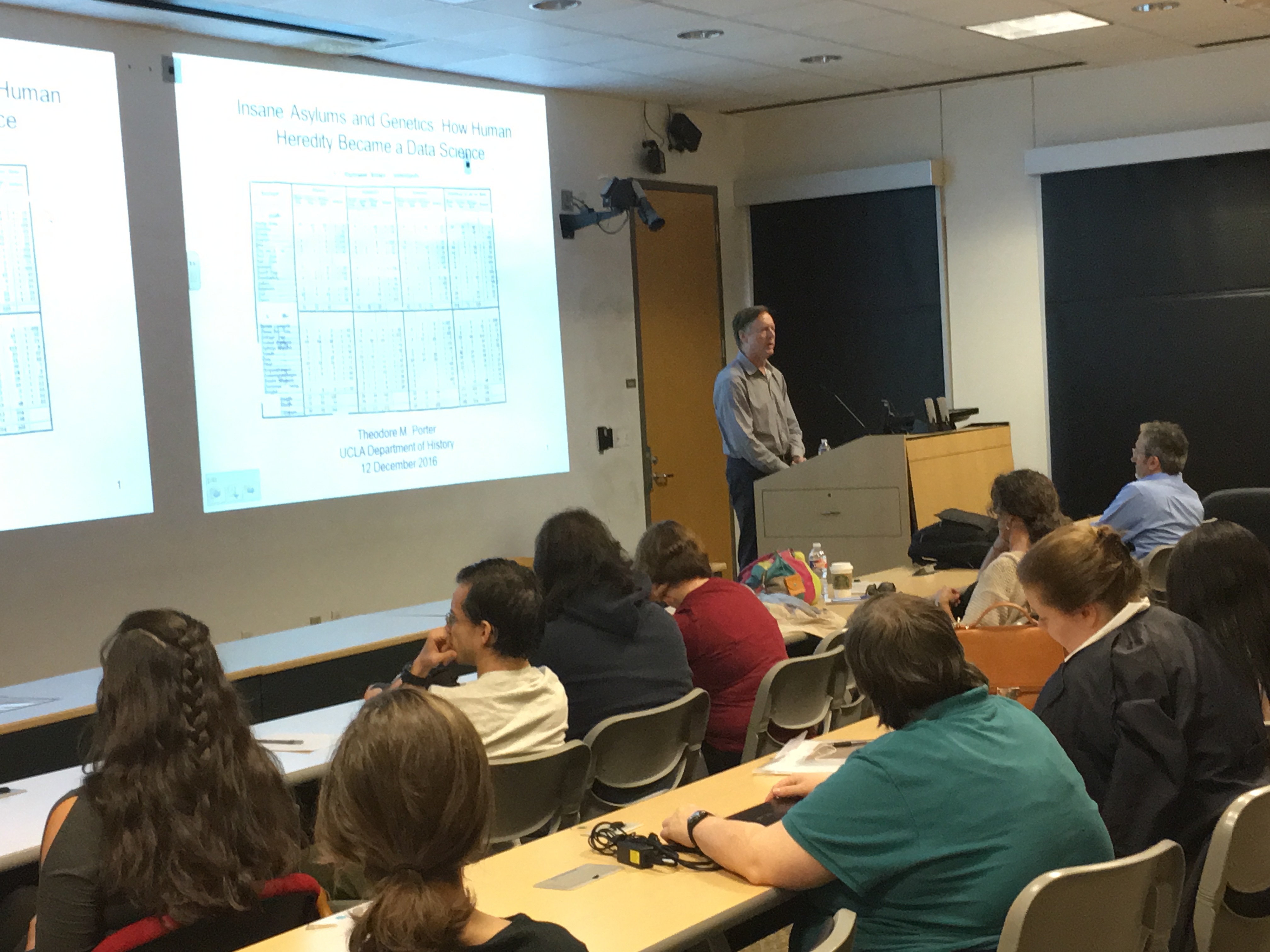
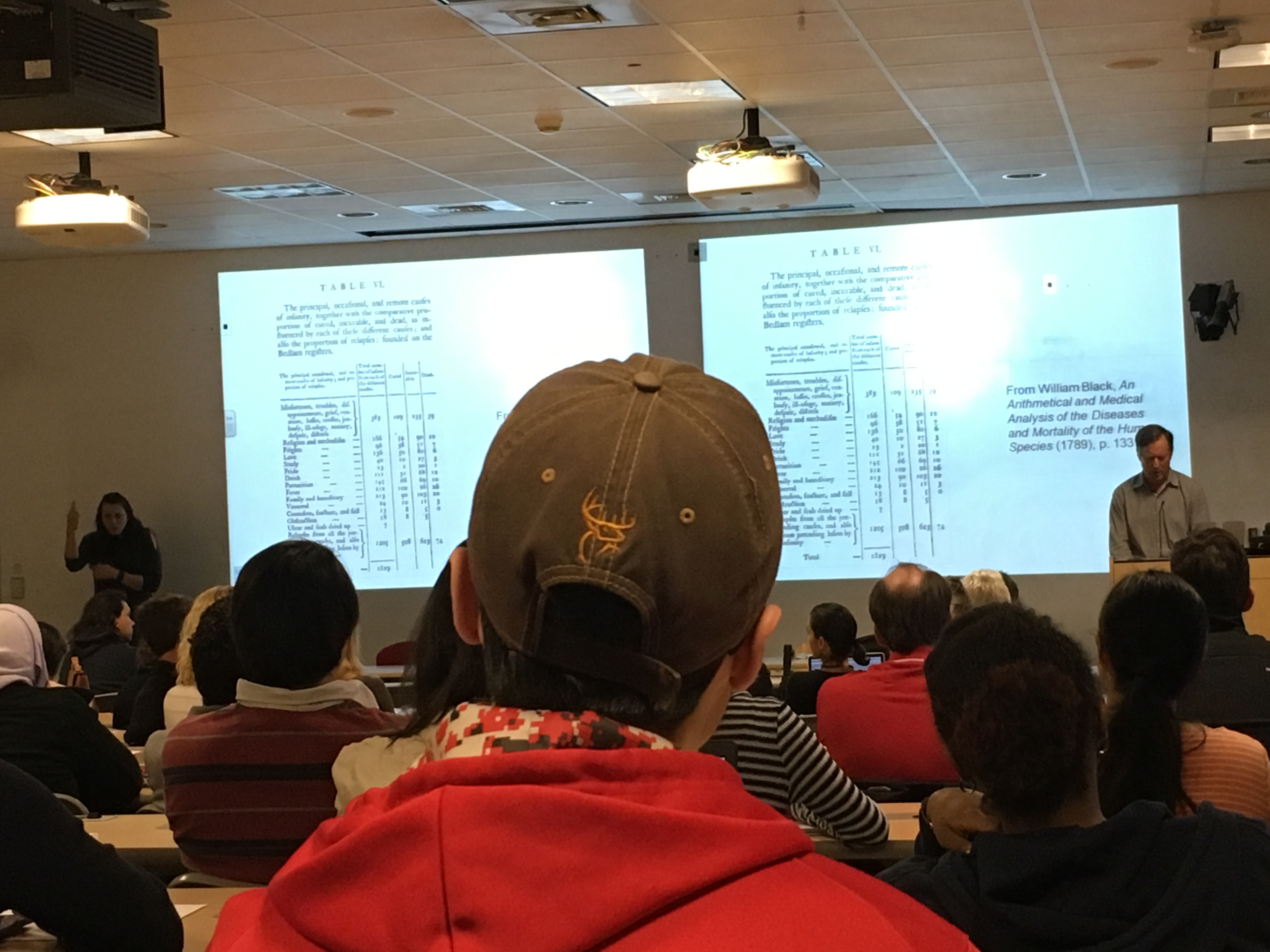
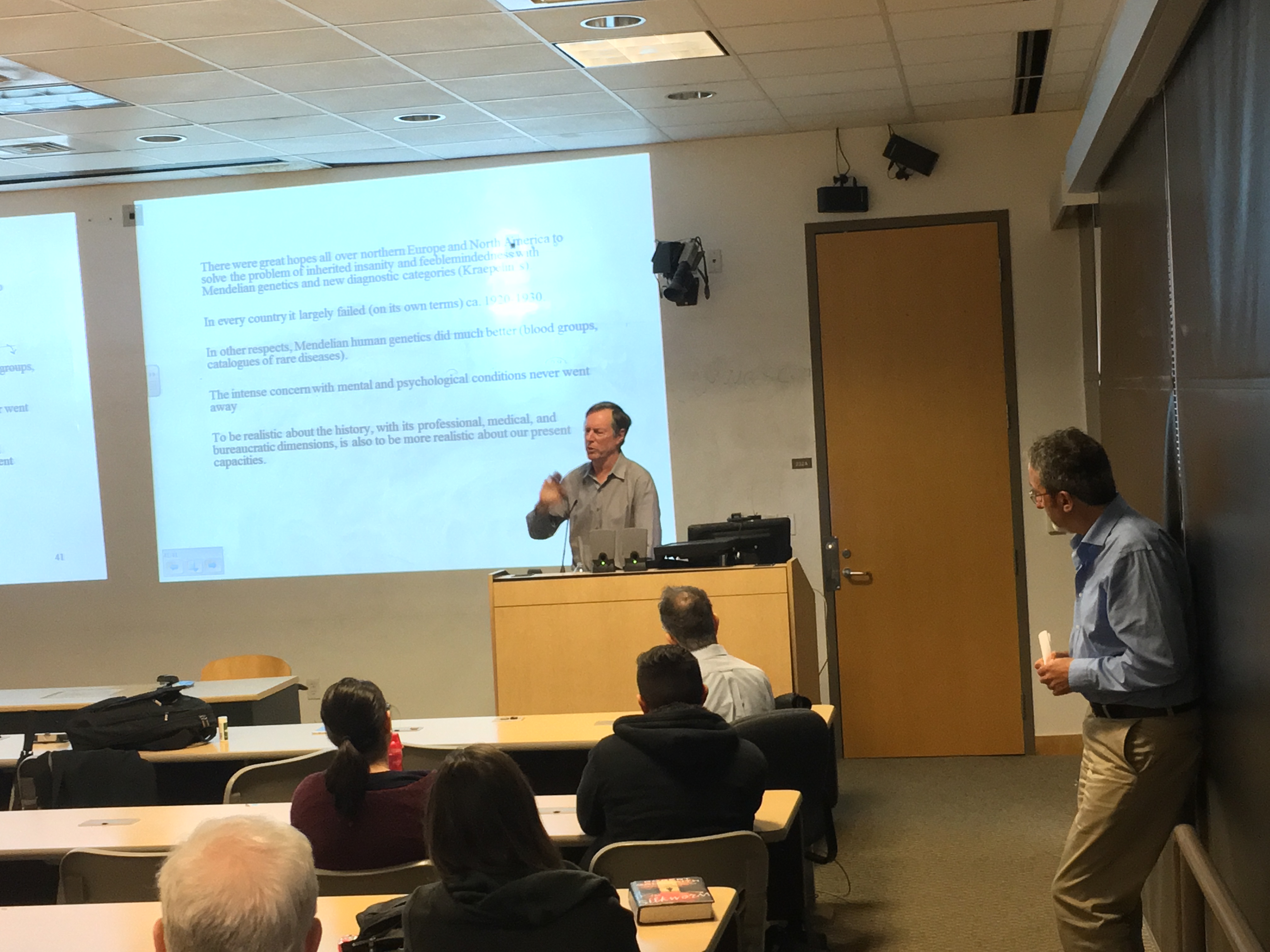
Audience Feedback |
n = 69 |
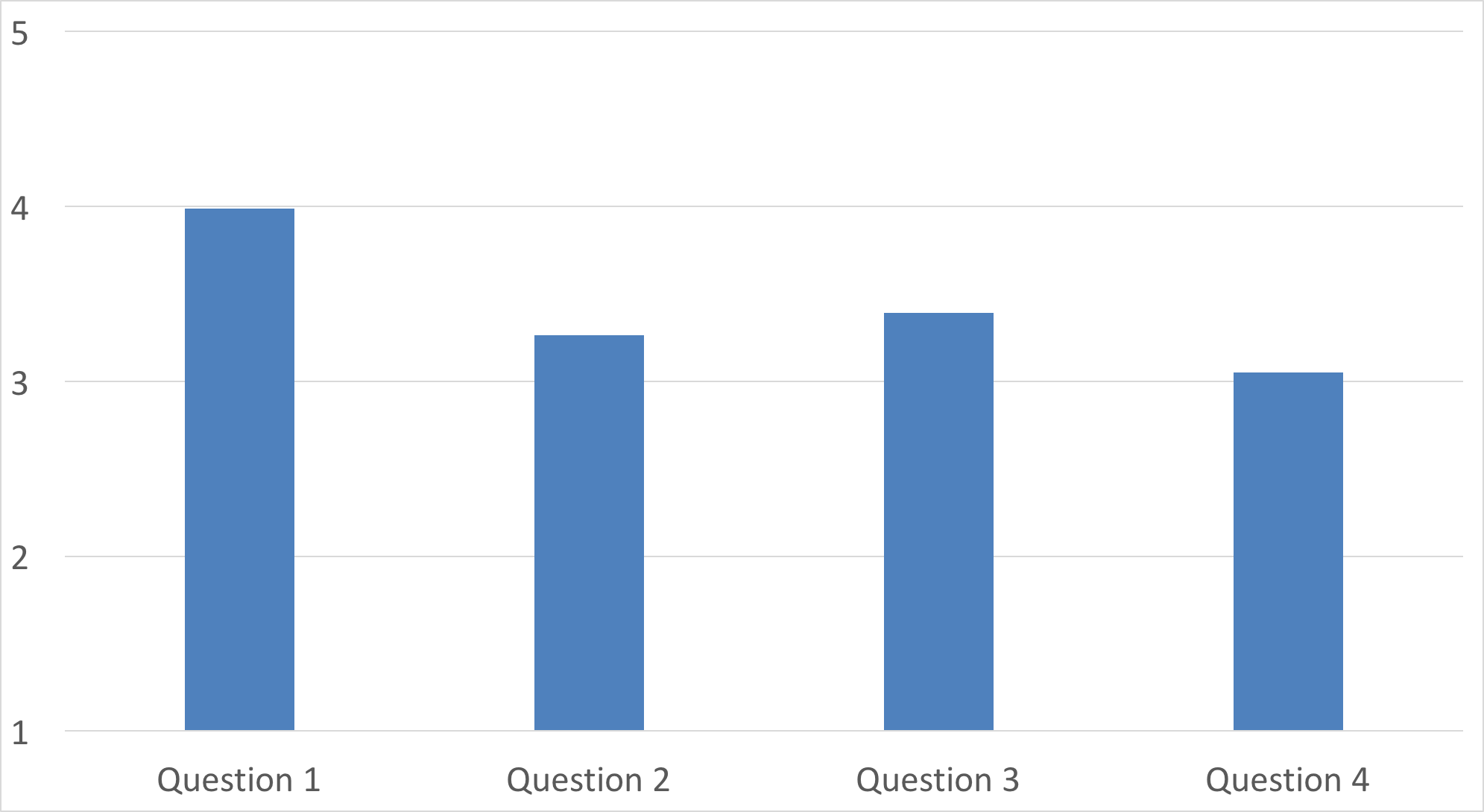
Question 1 - How interesting was the topic to you?
Question 2 - Did you learn anything useful?
Question 3 - How would you rate the quality of the presentation?
Question 4 - How would you rate the quality of the audience's interaction with the speaker?
Selective Comments
" Excellent series. Keep it up!"
- 2017 - 2018
- 2016 - 2017
- Behavioral Concepts and the Sciences of Human Behavior
H. Longino Apr 21, 2017 - Insane Asylums and Genetics: How Human Heredity Became a Data Science
T. Porter Feb 17, 2017 - The Nature of Pride: The Emotional Origins of Social Rank
J. Tracy Jan 23, 2017
- Behavioral Concepts and the Sciences of Human Behavior
- 2015 - 2016
-
Public Ethics, Politics and Sociobiology
M. P. Sheldon Mar 11, 2016 -
Classifying People by Color: How Racial Categories Change Over Time
A. A. Martinez Feb 29, 2016 -
The Origin of Social Impulse: E.O. Wilson's Recent and Controversial Rejection of Kin Selection in Historical Context
A. Gibson Dec 4, 2015
-
Public Ethics, Politics and Sociobiology
- 2014 - 2015
-
Special Event: Lone Star History of Science Meeting Writing the Origin with Burned Fingers: Darwin's Penance for the "Sin of Speculation"A. Sponsel Apr 3, 2015 - Welfare, Work, and Witness: Why Clinical Research Can Survive the Death of a Healthy Human Subject
L. Stark Apr 3, 2015 - The Distinctive Significance of Systemic Risk
A. James Mar 6, 2015 - The Devil's Heritage: Masuo Kodani, the "Nisei Problem," and Social Stratification at the Atomic Bomb Casualty Commission in Japan (1946-1954)
V.B. Smocovitis Jan 28, 2015 - Atypical Combinations and Scientific Impact
B. Uzzi Dec 8, 2014 - Psychology of Science and Technology
M. Gorman Nov 17, 2014 - How Economics Shapes Science
P. Stephan Sep 10, 2014
-
- 2013 - 2014
- The Decision to Put David Vetter in the Bubble
J. H. Jones Apr 16, 2014 - Ethical Paradoxes of
Control: Science, Engineering, and the Expansion of Moral ResponsibilityR. Hollander Mar 3, 2014 - 'Broken Symmetry': Humanism, Militarism, and the Dilemmas of Scientific Identity in Nuclear Age America.
J. Wang Feb 17, 2014 - Using Creative Non-Fiction in Teaching Research Ethics
C.M. Klugman Dec 2, 2013 - Does Neuroscience Undermine Responsibility?
W. Sinnott-Armstrong Nov 15, 2013 - Arming Mother Nature: The Birth of Catastrophic Environmentalism
J. Hamblin Oct 18, 2013
- The Decision to Put David Vetter in the Bubble
- 2012 - 2013
- Lead Wars: the Politics of Science and the Fate of America's Children
D. Rosner Mar 25, 2013 - Identifying potential pitfalls in the quantitative appraisal system for scientific careers
A.M. Petersen Dec 3, 2012 - Keeping Secrets: Scientists' strategic management of militarization, 1945-1980
S. Lindee Nov 12, 2012 - Evolutionary Theory as Methodological Anesthesia: Methodological and Philosophical Lessons from Evolutionary Psychology
R.N. Boyd Oct 19, 2012 - Panel on Peer-Review Issues
Oct 11, 2012
- Can technology enable cities to cope with the economic winter?
A. Hampapur Sep 21, 2012
- Lead Wars: the Politics of Science and the Fate of America's Children
- 2011 - 2012
- Engineering Success and Failure on 9/11
S.K.A. Pfatteicher Apr 27, 2012 - Regulating Ionizing Radiation: Flawed Standard, Flawed Ethics
K.S. Frechette Mar 5, 2012 - Do fish feel pain?
C. Allen Jan 25, 2012 - The Ethics of Relevancy
J. Levine Dec 13, 2011 - ORI Cases and How to Protect Yourself from Research Misconduct in Your Labratory
A.R. Price Nov 7, 2011
- Engineering Success and Failure on 9/11











